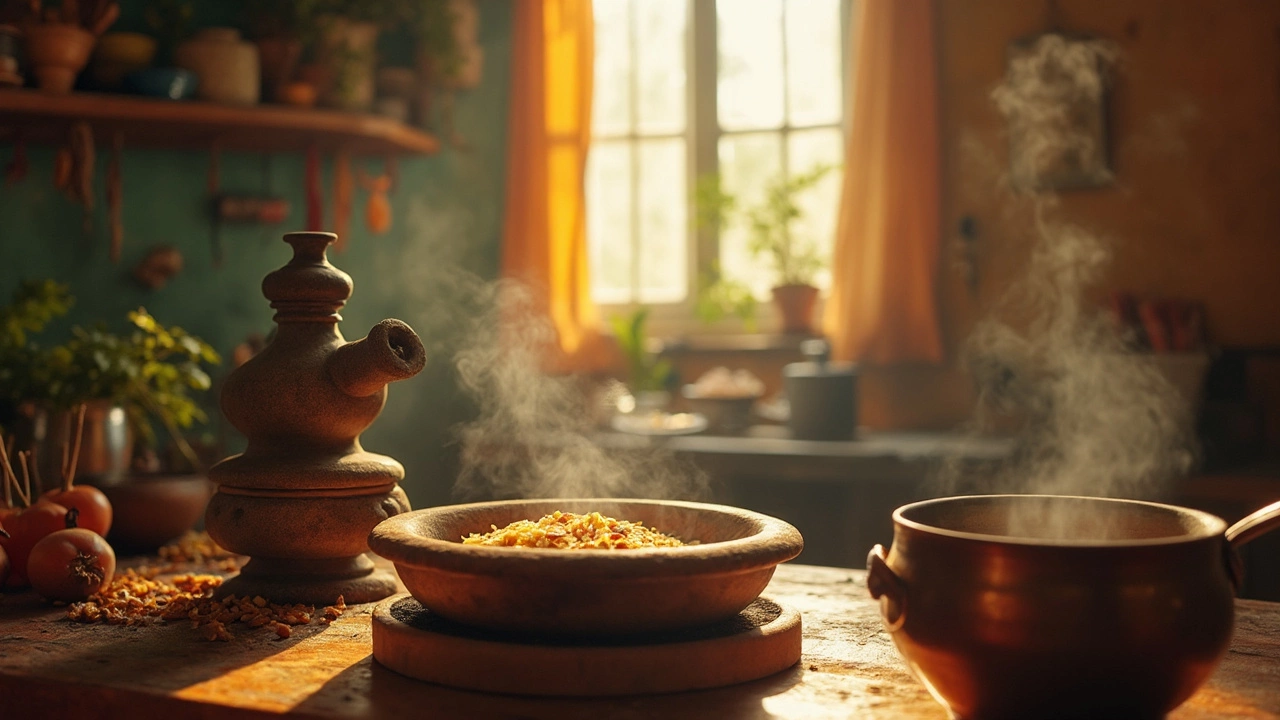Quick Fermentation for Indian Batters: Speed Up Your Dosa & Idli
When working with Quick Fermentation, a technique that speeds up the natural leavening of batters and doughs using acidity, heat, or safe additives. Also known as rapid fermentation, it lets home cooks cut waiting time while keeping flavor and texture.
Traditional Dosa batter, a rice‑and‑lentil mix that usually needs 8‑12 hours of fermentation exemplifies how time‑intensive preparation can become a barrier. By applying quick fermentation, you compress that window to under an hour without sacrificing the airy crumb that defines a perfect dosa or idli. The process requires a starter – most often Curd, plain yogurt that supplies natural lactobacilli to jump‑start the leavening – or a chemical aid like Baking soda, a leavening agent that reacts with acidity to produce carbon dioxide instantly. Quick fermentation therefore encompasses Dosa batter, relies on curd or baking soda, and delivers fast, reliable rise.
Hands‑On Quick Fermentation Techniques
One of the easiest tricks is to warm the batter to about 35‑40 °C (95‑105 °F) before adding the starter. The heat accelerates bacterial activity, making the batter bubbly in 20‑30 minutes. If you’re short on time, mix a tablespoon of curd per cup of batter, then sprinkle a pinch of baking soda. The curd provides the microbes, while the baking soda creates an immediate gas burst – a combo that shortens fermentation by up to 70 %.
Another method is the “instant starter” hack: blend equal parts of plain yogurt, water, and a splash of lemon juice. The extra acid lowers pH, prompting the bacteria to work faster. Combine this blend with your batter, cover, and let it rest for 15‑20 minutes. You’ll see tiny bubbles forming along the surface, a clear sign that the batter is on its way to the right tanginess and softness.
Temperature control matters more than you think. A warm kitchen (around 30 °C) can turn a 10‑minute waiting period into a 45‑minute one if the environment is cool. If your home is chilly, place the batter in a turned‑off oven with the light on, or wrap the bowl in a damp kitchen towel. These simple heat tricks keep the microbial enzymes humming, ensuring that quick fermentation doesn’t compromise flavor.
Even with fast methods, it’s important to watch for over‑fermentation. Too much acid or too much baking soda can make the batter taste sour or give a bitter aftertaste. If you notice a strong vinegar smell, reduce the curd amount next time or lower the temperature. Likewise, a foamy surface that collapses quickly signals you’ve added too much soda – dial it back to a pinch per cup.
The beauty of quick fermentation is that it works for both dosa and idli, and even for other South Indian staples like appam or uttapam. By mastering these shortcuts, you can serve fresh, fluffy batters any time of day without planning overnight. Below you’ll find a curated list of articles that dive deeper into each tip – from instant dosa batter hacks to the science behind curd‑driven fermentation – so you can keep experimenting with confidence.

No Yeast? No Problem: Quick Tips to Ferment Dosa Batter
Fermenting dosa batter without yeast can be a challenge, especially when you're in a hurry to savor the delicious South Indian treat. This article provides effective techniques and lesser-known tips to speed up the fermentation process using ingredients and methods you probably already have at home. From the optimal soaking time to clever warm spots in your kitchen, discover practical advice for quick and successful dosa preparation. Say goodbye to long waits and hello to delightful dosas with these easy, no-yeast fermentation hacks.

Quick Dosa Batter Fermentation without Yeast: Easy Tips & Tricks
Fermenting dosa batter quickly without yeast can be a challenge, but there are several effective methods to speed up the process naturally. This guide explores easy-to-implement techniques like using warm environments, sugar, and alternative ingredients. With these insights, anyone can enjoy delicious dosas in less time without compromising on taste and texture. From temperature tricks to ingredient hacks, transform your dosa-making experience.